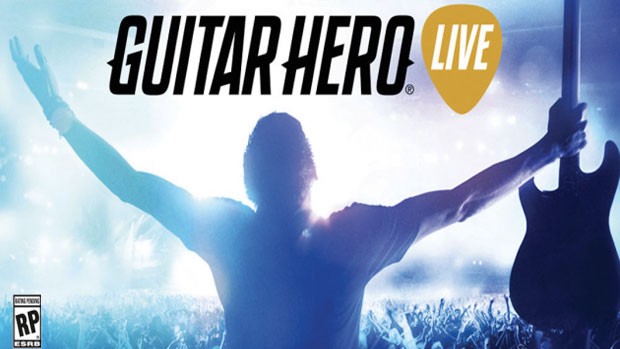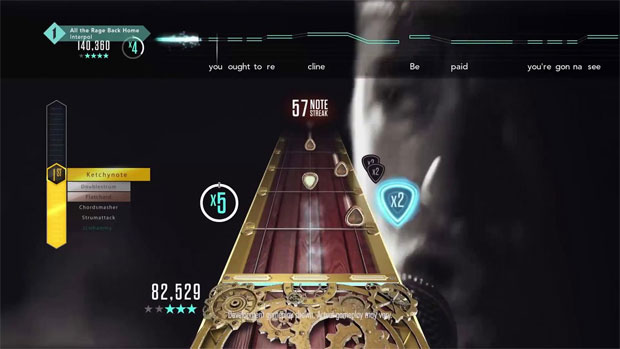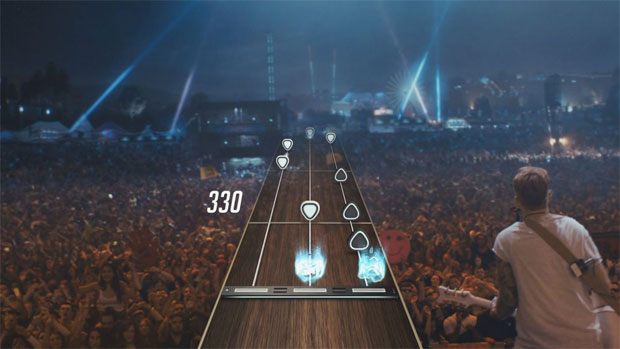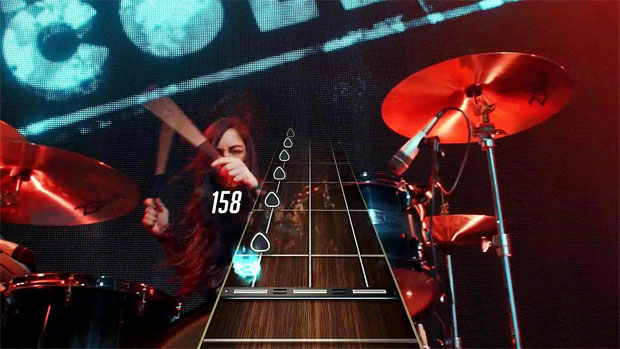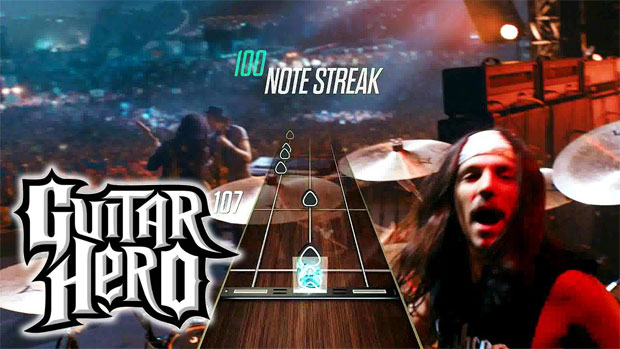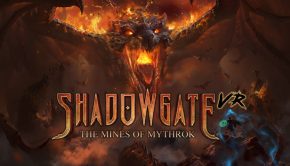Guitar Hero Live (EB Expo 2015 Hands On)
Guitar Hero is a franchise that could have been made specifically for me. As a long-time lover of rhythm games and a guitarist for years, I jumped on the bandwagon instantly in 2005. Suddenly I didn’t need to go to the arcade to satisfy my rhythm cravings with Dance Dance Revolution; I had a rhythm game in my own home.
I found Guitar Hero fun, but it wasn’t love at first sight—or, rather, at first play. The game clashed with my experiences of playing an actual guitar. While the guitar controller incorporated techniques like pull-offs, hammer-ons, and the whammy bar, the coloured buttons on the frets felt nothing like what I was used to. And, after the initial boom of Guitar Hero and similar games, their sales plunged in 2009, indicating I wasn’t the only one dissatisfied by what they were offering.
Now, after a six year hiatus, a new game in the Guitar Hero franchise—Guitar Hero Live—has emerged from the rhythm game wasteland. And, I have to say, I’m impressed.
Watching the initial trailers for Guitar Hero Live, I could tell that the franchise had moved away from its well-known five colours along the fretboard to a sleek new black-and-white look, but it was difficult to work out exactly how this translated to the new controller without trying it out for myself.
Luckily, I had an opportunity to get hands-on with Guitar Hero Live at EB Expo 2015. It took a couple of minutes (and an overheard conversation) for me to figure out the new system: instead of the five buttons of the old system, represented by five colours, the new Guitar Hero controller has three black buttons on the side of the fretboard closest to the player and three white buttons on the side furthest away. The colour and position of the notes that you play is indicated on the familiar moving fretboard on the screen.
The controller’s new system of six buttons across three frets encourages players to reposition their fingers in a way that simulates the presence of strings, and to sometimes hold a finger across a fret to create a bar chord. These movements are very familiar to a guitarist, and create a more realistic experience. The new buttons on the controller also mean that only the player’s index, middle, and ring fingers need to be used, which should hopefully help anyone who complained of their pinky fingers not being strong or dexterous enough to control the old system’s blue and orange buttons.
A new controller is not the only thing Guitar Hero Live is boasting. The game has two different modes that offer slightly different experiences. The first—‘Guitar Hero Live’—attempts to provide players with a more immersive experience, with the scenery behind the fretboard shot from the perspective of a lead guitarist. If you play well, you can see the crowd cheering and your band members encouraging you, but if you do poorly everyone shakes their heads in disappointment or throws things at you. This was the mode I played at EB Expo, and I didn’t find the new background particularly noticeable; generally I was paying too much attention to the notes that were coming towards to me to care if the bass guitarist was smiling or not.
The second mode is called ‘Guitar Hero TV’, or ‘GHTV’, and this is where you can add additional songs to your library, play multiplayer with your friends, or use the new ‘Hero Powers’ that have been introduced to replace ‘Star Power’. There will apparently be hundreds of songs available through GHTV, even at release, with the mode acting as a way to play along to favourite tracks as well as make new music discoveries. Considering the number of songs I heard for the first time playing other titles in the franchise (and that I now love), I’m not surprised that Guitar Hero is using music discovery as a serious selling point of GHTV. But it’s clear that GHTV is not supposed to be the primary game mode, with Guitar Hero Live acting as the ‘career’ mode of previous titles.
While I could take or leave the novelty of having a simulated live audience watch me play, the scenery is not as important as the gameplay. I’m excited by how Guitar Hero Live is trying to revive the rhythm game genre with its updated controller and gameplay overhaul. So excited, in fact, that I might just welcome the Guitar Hero franchise back into my home when Guitar Hero Live is released in Australia on October 20, 2015.


